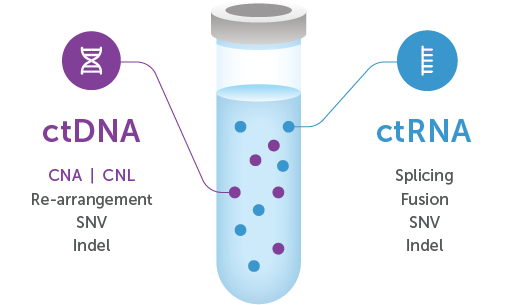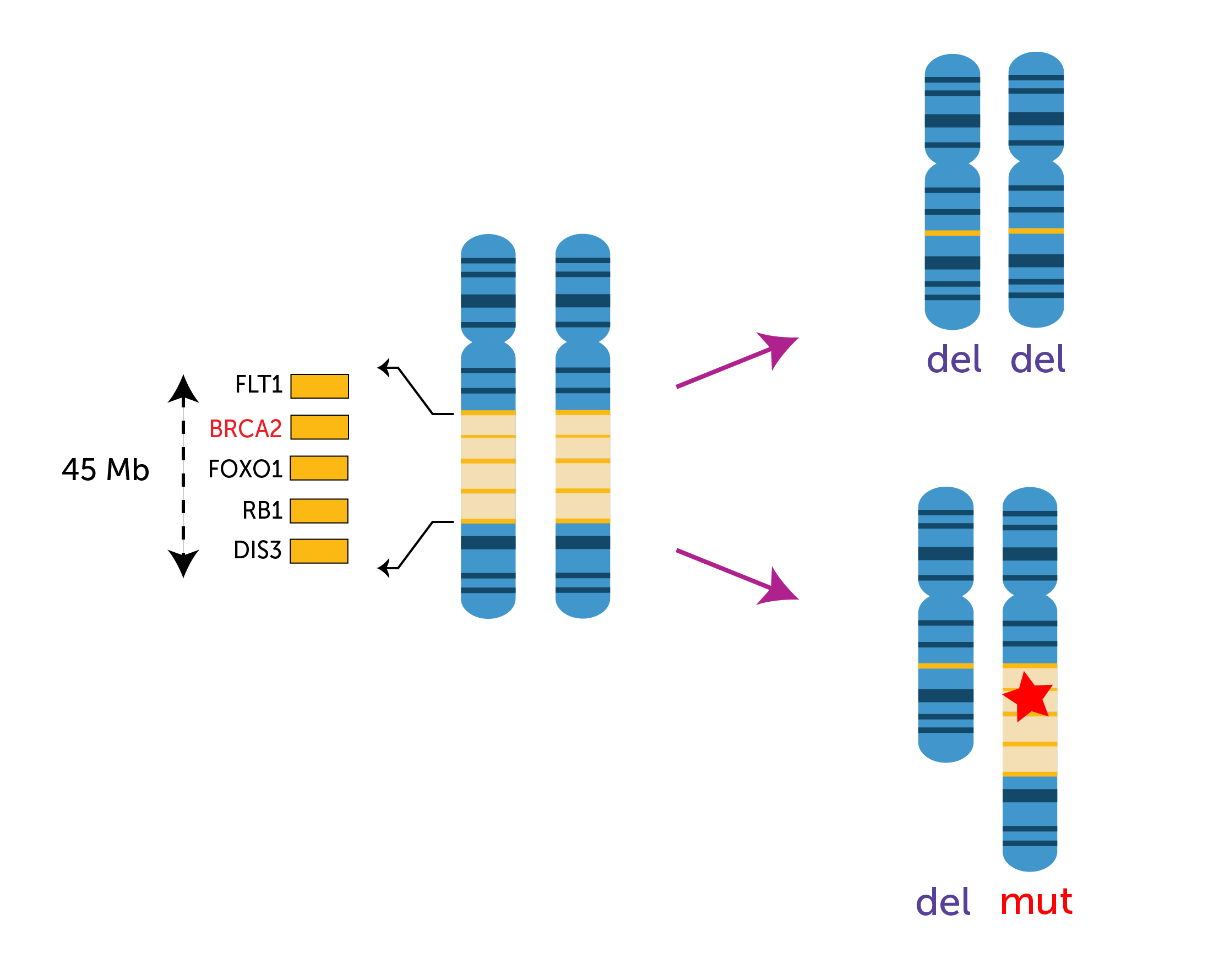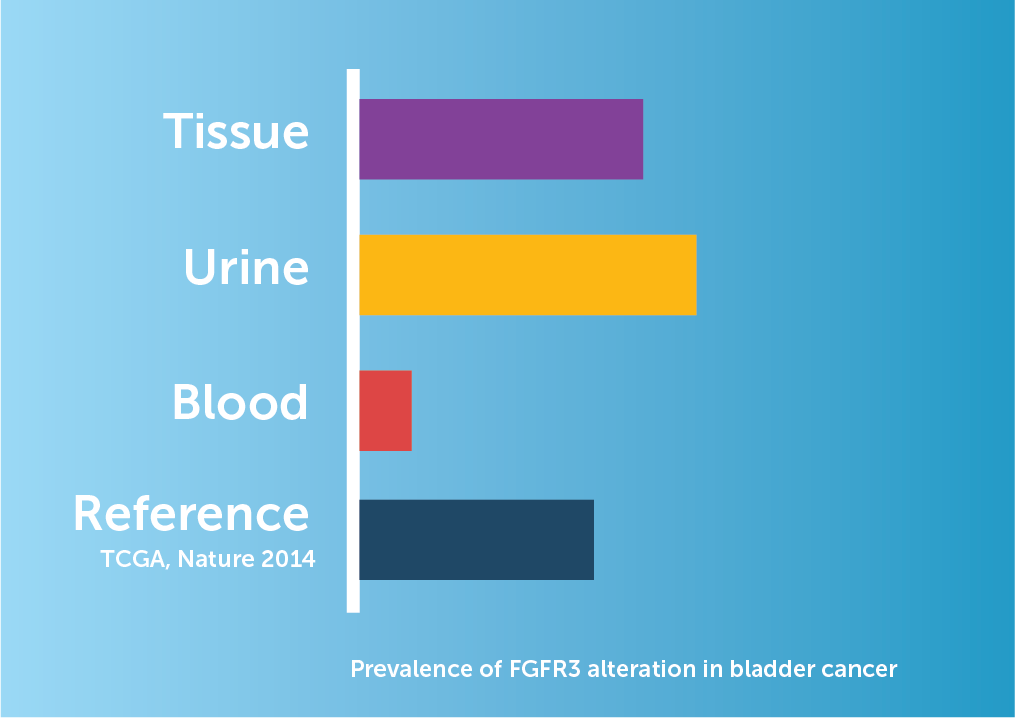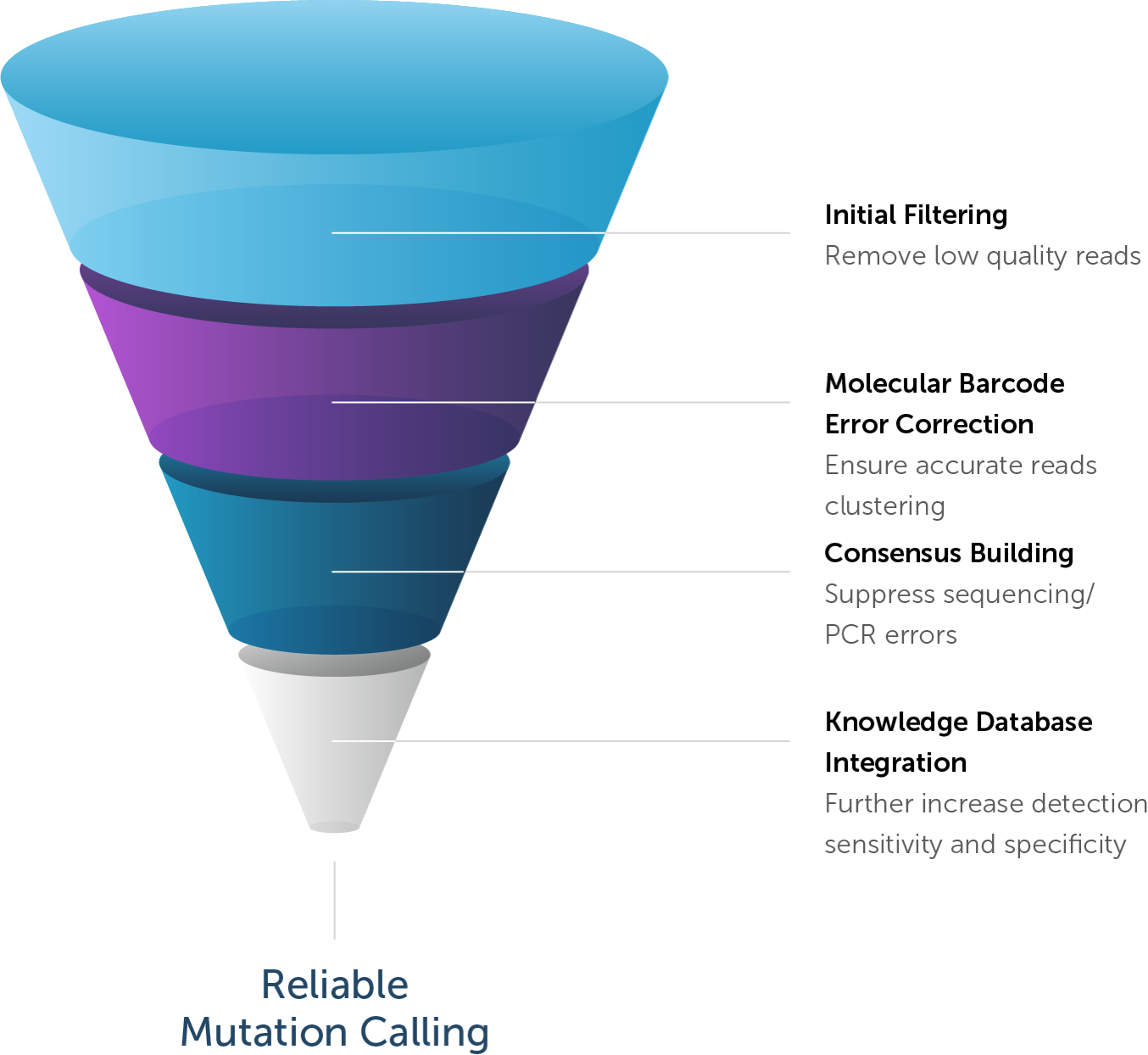In many cancer types, progression happens at both the DNA and the RNA level, and sometimes at the RNA level alone. A more holistic biomarker profiling uncovering the genomic blueprint (DNA copy number loss) and the functional biology (RNA fusion and splicing) is critical to inform clinical decisions.



Urine is the ideal body fluid for non-invasive molecular profiling of bladder cancer, in which more variants can be identified in urine than in blood.
DeepSEA algorithm is designed to navigate through deep layers of genetic noise and complexity to reveal meaningful biological data. The powerful bioinformatic pipeline for cancer mutation features an integrated collection of proprietary algorithms for sequencing/PCR error suppression and accurate variant calls, enabling confident mutation calling.

RNA sequencing provides functional readout for better clinical decisions. RNA data can confirm genomic alterations detected at the DNA level as well as identify genomic alterations that are below detection limit of DNA assays.
Translocation can occur anywhere and DNA is not the ideal substrate to search for oncogenic fusions without prior knowledge of detailed breakpoint information. By contrast, RNA is an intermediary between DNA and protein with only limited coding regions that need to cover. This makes RNA a better test material for known and novel fusion detections as it naturally enriches expressed translocations and only a small set of probes are necessary to detect such fusions for a given gene.
RNA splicing is an unique process when precursor mRNA transcribed from DNA is transformed into a mature mRNA. RNA sequencing, by nature, is a direct solution for detection of splicing events comparing to DNA-based assays.